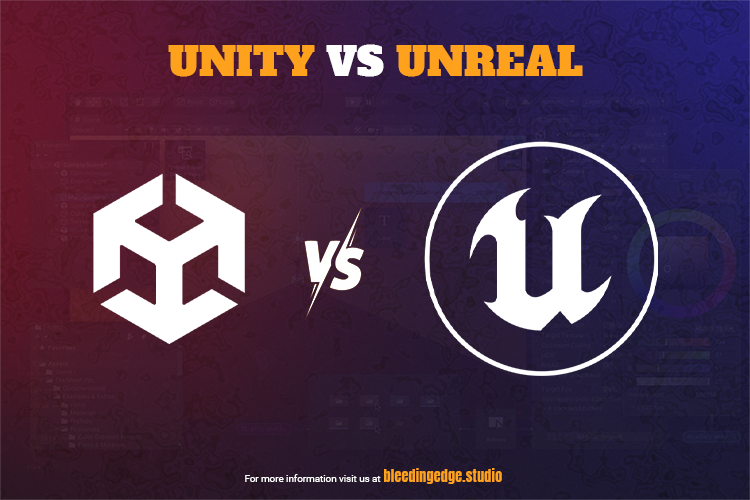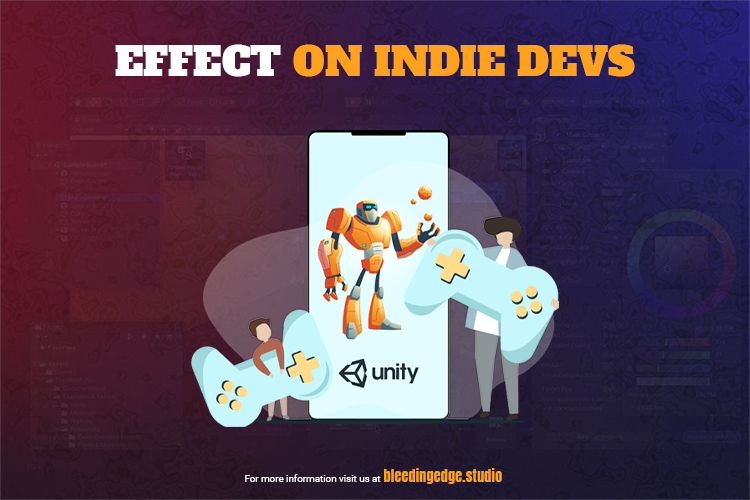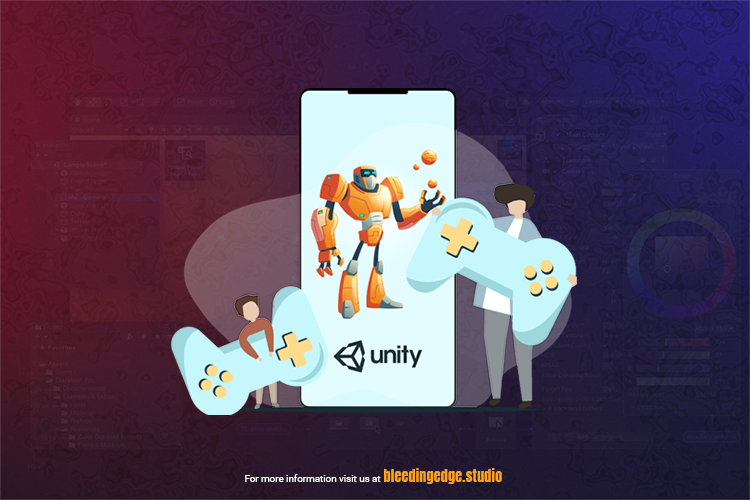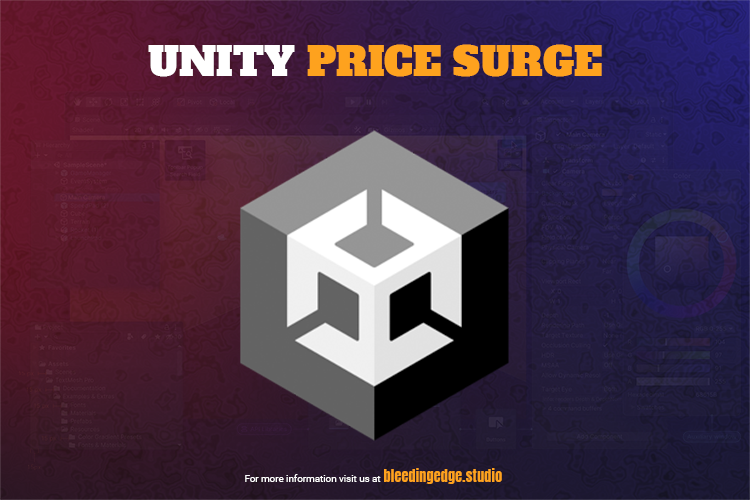Title: Unleash the Effect of Unity’s Pricing Change: A Game-Changer or Game Over in 2023?
In the fast-paced world of game development, where innovation and creativity are the driving forces behind industry success, pricing strategies can make or break a platform. Recently, Unity, the global leader in creating and operating real-time 3D content, made a significant move that sent shockwaves throughout the gaming community. Unity announced a fundamental shift in its pricing model, switching from a subscription-based system to one based on the number of game installations. This seemingly innocuous change has ignited a passionate debate and raised critical questions about the future of Unity and its role in the game development ecosystem.
The Announcement Heard ‘Round the Industry
Unity’s pricing change was unveiled in a press release that caught many within the gaming industry by surprise. For years, Unity had been celebrated for its flexible and developer-friendly pricing structure. Developers could subscribe to Unity services with the confidence that they would have predictable costs, regardless of how successful or widespread their games became.
However, the new pricing model took an entirely different approach. Unity announced that developers would now be charged based on the number of installations of their games. In essence, the more successful a game becomes, the more developers will have to pay. This represents a profound shift in how Unity monetizes its services and has substantial implications for developers, particularly indie studios and smaller teams.
The Immediate Fallout
The immediate reaction to Unity’s pricing change was swift and intense. Developers, especially those in the indie scene, felt blindsided by the sudden shift. Under the previous subscription model, Unity had provided a level playing field where developers could experiment, iterate, and scale their projects without worrying about unforeseen cost spikes.
The shift to per-installation pricing raised concerns among indie developers, who often operate on tight budgets and rely on Unity for its accessibility and affordability. Many took to social media platforms to voice their frustrations, expressing concerns about the potential financial burden this new pricing structure could impose.
As a result, the gaming community’s response was united in its outrage. Social media channels lit up with posts and tweets criticizing Unity’s decision. Some developers even threatened to abandon the Unity platform altogether, opting for alternatives that promised more stability and cost predictability.
The Unity Community’s Reaction
Unity has always placed great emphasis on fostering a strong and supportive developer community. However, the pricing change threatened to fracture this unity. Unity’s official forums and various developer communities became hotbeds of discontent, with developers from all walks of life sharing their grievances and debating the merits of the new pricing structure.
Developers speculated about the reasons behind Unity’s shift. Some suggested that it might be a response to increased competition in the market. In recent years, Unity has faced fierce competition from other engines like Unreal Engine, and the move to per-installation pricing was seen by some as an attempt to maximize revenue in a crowded marketplace.
Voices from the Industry
Prominent figures within the gaming industry added their voices to the chorus of criticism. Renowned game developers and industry analysts took to social media, gaming forums, and even traditional media outlets to share their concerns and insights.
One respected developer commented, “Unity’s pricing change is astonishingly bad for indie devs. It puts an undue burden on small studios trying to bring their creative visions to life. This move could stifle innovation in the industry.”
Another industry insider labeled the change as “deeply backward,” emphasizing that it contradicted the principles of accessibility and affordability that Unity had built its reputation on.
Unity’s Response
In the face of mounting backlash, Unity Corporation issued a statement attempting to clarify its position. The company acknowledged the concerns expressed by the developer community and emphasized that the pricing change was aimed at aligning their business model with the actual usage of their platform.
Unity’s statement read, in part: “We understand the concerns expressed by our valued developer community. Our decision to transition to per-installation pricing was made after careful consideration of our platform’s evolving needs. We are committed to continuing the dialogue with our developers and exploring ways to address their concerns.”
However, this response, while a step in the right direction, did little to quell the ongoing debate. Developers were looking for concrete solutions and greater transparency regarding how the new pricing model would impact their bottom line.
The Path Forward
As the initial shock of Unity’s pricing change begins to settle, the gaming industry finds itself at a crossroads. Will Unity be able to regain the trust of its developer community, or will the pricing controversy lead to a mass exodus of developers to alternative platforms?
Indie developers, in particular, are facing difficult decisions. Some have already started exploring alternative game engines, while others are adopting a “wait and see” approach, hoping that Unity will make adjustments to its pricing structure in response to the backlash.
Industry observers are closely monitoring how Unity’s competitors are positioning themselves in the wake of this controversy. Unreal Engine, for example, has seized the opportunity to promote its more stable pricing model as a compelling alternative for developers feeling disillusioned by Unity.
Unity vs. Unreal Engine: A Growing Rivalry

Unity and Unreal Engine have long been the two titans of the game development industry. Both engines have their unique strengths and have catered to different segments of the developer community. Unity’s strength has traditionally been its accessibility and ease of use, making it a favorite among indie developers and smaller studios. In contrast, Unreal Engine has been known for its cutting-edge graphics and capabilities, often attracting larger studios and AAA game developers.
However, Unity’s pricing change has given Unreal Engine an unexpected advantage. Unreal Engine’s subscription-based model remains stable, with no per-installation fees. This has led some developers to reconsider their allegiance to Unity and explore the possibilities of Unreal Engine for future projects.
The rivalry between Unity and Unreal Engine is nothing new, but the recent pricing controversy has intensified the competition. Developers are now scrutinizing the two engines more closely, evaluating not only their technical capabilities but also their pricing structures and long-term viability.
The Indie Dilemma
Indie developers find themselves in a unique predicament. They have long relied on Unity for its affordability and ease of use, allowing them to focus on game development rather than complex financial calculations. However, the pricing change has disrupted this equilibrium, forcing indie studios to reassess their game engine choices.

Some indie developers have openly expressed their intentions to switch to Unreal Engine or other platforms that offer more predictability in pricing. They argue that the per-installation model introduces financial uncertainty and could jeopardize the success of their projects.
On the flip side, some indie developers remain loyal to Unity, hoping that the company will address their concerns and provide more transparency regarding how the new pricing model works. They argue that Unity’s vast ecosystem and user-friendly interface still make it a strong contender for their game development needs.
The Big Players
While indie developers form a significant part of Unity’s user base, larger studios and corporations also rely on the platform for their game development endeavors. Unity’s transition to per-installation pricing has raised questions for these big players as well.
Large studios often operate on a different scale, with projects that may garner millions of installations. For them, the per-installation pricing model could lead to substantial cost increases. However, these studios might also have the financial resources to absorb these higher costs, making Unity’s pricing change more palatable for them.
The key concern for these big players is not just the financial impact but also the predictability of their expenses. In the gaming industry, where budgets are meticulously planned, unexpected cost fluctuations can disrupt project timelines and potentially affect profitability.
Some larger studios have expressed their concerns privately to Unity and are seeking assurances regarding pricing stability and long-term partnerships. They are hoping that Unity will engage in a constructive dialogue with its enterprise customers to find mutually beneficial solutions.
The Broader Implications
The Unity pricing change saga extends beyond Unity itself. It underscores the broader challenges and dynamics of the game development industry.
1. Competition in the Game Engine Market
The game engine market has become increasingly competitive in recent years. Unity, once the uncontested leader, now faces formidable rivals like Unreal Engine, Godot, and CryEngine, each with its own unique strengths and pricing structures. The pricing controversy has given Unity’s competitors an opportunity to position themselves as more reliable alternatives, potentially reshaping the competitive landscape.
2. The Role of Indie Developers
Indie developers play a crucial role in the gaming industry’s ecosystem. They often bring fresh and innovative ideas to the table, pushing the boundaries of creativity. The Unity pricing change has raised concerns about whether indie developers will face barriers that hinder their ability to thrive and create groundbreaking games. The industry is watching closely to see how Unity and other engines respond to these concerns.
3. The Future of Game Development

The debate surrounding Unity’s pricing change raises questions about the future of game development platforms and their relationships with developers. Game engines are not just tools; they are integral parts of the creative process. Developers rely on them to bring their visions to life. Unity’s experience serves as a reminder that pricing models and policies can significantly impact the dynamics of this relationship.
Unity’s Next Steps
Unity Corporation now finds itself at a pivotal moment. How the company responds to the pricing controversy will likely determine its trajectory in the coming years. To regain the trust of its developer community and maintain its leadership position, Unity may need to take several key steps:
1. Improved Communication
Unity must prioritize transparent and open communication with its developers. This means providing clear and detailed information about the per-installation pricing model, how it works, and how it will affect developers of all sizes. Developers need to know what to expect and how to plan their budgets accordingly.
2. Addressing Concerns
Unity should actively engage with the concerns raised by developers, both indie and enterprise. Listening to feedback, considering adjustments to the pricing model, and finding solutions to mitigate any financial hardships developers may face will be essential in rebuilding trust.
3. Long-Term Partnerships
Unity’s relationships with developers, especially larger studios, are built on trust and reliability. Unity should work closely with these partners to ensure that their needs are met and that they can continue to develop successful projects on the platform.
4. Competitive Edge
Unity must continue to innovate and evolve to maintain its competitive edge in the game development market. This means not only addressing pricing concerns but also improving its engine’s performance, capabilities, and support for developers.
5. Community Engagement
Unity’s developer community is a powerful asset. The company should actively involve its community in shaping the platform’s future through feedback mechanisms, developer outreach, and collaborative initiatives. A strong, engaged community can help Unity navigate challenges and drive innovation.
The pricing change implemented by Unity has already had significant effects on the gaming industry and is poised to shape its future in several ways:
Immediate Effects:
1. Developer Exodus:
One immediate effect of Unity’s pricing change was a vocal backlash from developers, especially indie developers. Many expressed their discontent on social media and forums, with some even announcing their intention to switch to alternative game engines like Unreal Engine. This has led to a noticeable shift in developer loyalty.
2. Increased Uncertainty:
The per-installation pricing model introduced by Unity has created uncertainty among developers, particularly for those who previously enjoyed the predictability of subscription-based pricing. Developers now face potentially unpredictable costs, which can impact their budgeting and financial planning.
3. Competitor Opportunities:
Unity’s competitors, particularly Unreal Engine, have seized the opportunity to promote their stable and subscription-based pricing models. Unreal Engine, in particular, has become an attractive alternative for developers looking for a more predictable cost structure.
4. Trust Erosion:
The controversy surrounding the pricing change has eroded some of the trust that Unity had built with its developer community over the years. Developers who felt blindsided by the change now approach the platform with caution, and Unity must work to rebuild that trust.
Future Implications:
1. Competitive Landscape:
The competition in the game engine market is intensifying. Unity’s pricing change has highlighted the importance of pricing stability and transparency, and other game engine providers may adapt their strategies to cater to the needs of developers more effectively. This could lead to more competitive pricing models across the industry.
2. Developer Choice:
Developers now have more choices when it comes to game engines. Unity’s pricing change has empowered developers to explore alternatives and consider which engine best suits their needs, both in terms of cost and capabilities. This could lead to a more diverse ecosystem of game engines, fostering innovation.
3. Unity’s Response:
The future of Unity will be heavily influenced by its response to the controversy. If the company listens to developer feedback, makes adjustments to the pricing model, and focuses on rebuilding trust, it may still retain a significant portion of its user base. Unity’s ability to adapt and address developer concerns will be a key factor in its future success.
4. Impact on Indie Developers:
Indie developers, in particular, face a critical decision about their game engine choice. Their success often hinges on affordability and accessibility, and Unity’s pricing change disrupted this equilibrium. The future may see indie developers diversifying their engine choices or continuing to work with Unity, depending on how the company addresses their concerns.
5. Game Innovation:
The pricing change’s impact on developers, especially indie studios, could affect the pace and diversity of game innovation. If developers face financial constraints or uncertainty due to pricing, it may impact their willingness to take creative risks or pursue ambitious projects.
In summary, Unity’s pricing change has had immediate effects, including developer discontent and increased competition, while its long-term implications will depend on how Unity responds and how the gaming industry adapts. The key themes for the future include a more competitive landscape, greater developer choice, and the evolving relationship between game engines and developers as affordability and accessibility continue to be key considerations in the industry’s growth and development.
Conclusion
The controversy surrounding Unity’s pricing change has put a spotlight on the intricate relationship between game developers and the platforms they rely on. Unity, once hailed for its accessibility and developer-friendly approach, has faced fierce backlash from its own community. The outcome of this saga will not only impact Unity’s reputation but could also influence the broader landscape of game development platforms.
As Unity navigates the turbulent waters of change, the entire gaming industry watches closely. The lessons learned from this episode will undoubtedly shape the future of game development, pricing strategies, and the dynamics between platforms and developers. Unity’s journey from this point forward will determine whether it remains a game-changer or faces the risk of becoming a cautionary tale in the ever-evolving world of game development.
In the end, the Unity pricing change controversy serves as a vivid reminder that in an industry where creativity reigns supreme, the financial considerations that underpin it are equally vital. The balance between innovation and affordability is delicate, and striking it right is essential for the continued growth and vibrancy of the gaming world.
As developers, gamers, and industry enthusiasts, we’ll be watching with bated breath to see how Unity responds and how the gaming landscape evolves in the wake of this game-changing pricing shift.
For more topics, see https://bleedingedge.studio/blog/

